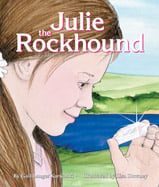Alignment to Standards for CT

| Grade | Number | Standard |
|---|---|---|
| 2 | SC:2.3 | Earth materials have varied physical properties, which make them useful in different ways. |
| 3 | SC:3.3 | Earth materials have different physical and chemical properties. |
| 3 | SC:3.3.a. | Rocks and minerals have properties that may be identified through observation and testing; these properties determine how earth materials are used. |
| 3 | SC:3.3.a1 | Differentiate between rocks and minerals. |
| 3 | SC:3.3.a2 | Use the senses and simple measuring tools to gather data about various rocks and classify them based on observable properties (e.g., shape, size, color, weight, visible markings). |
| 3 | SC:3.3.a3 | Conduct simple tests to determine properties of different minerals (e.g., color, odor, streak, luster, hardness, magnetism), organize data in a table, and use the data and other resources to identify unknown mineral specimens. |
| 3 | SC:3.3.a4 | Summarize nonfiction text to compare and contrast the conditions under which igneous, metamorphic and sedimentary rocks are formed. |
| 3 | SC:3.3.a5 | Observe and analyze rock properties (e.g., crystal size or layers) to infer the conditions under which the rock was formed. |
| 3 | SC:3.3.a6 | Evaluate the usefulness of different rock types for specific applications (e.g., buildings, sidewalks, stone walls, statues or monuments). |
| 3 | SC:3.4 | Earth materials provide resources for all living things, but these resources are limited and should be conserved. |
| K | SC:K.1 | Objects have properties that can be observed and used to describe similarities and differences. |
| K | SC:K.1.a | Some properties can be observed with the senses, and others can be discovered by using simple tools or tests. |
| K | SC:K.1.a2 | Make scientific observations using the five senses, and distinguish between an objectês observable properties and its name or its uses. |
| K | SC:K.1.a3 | Classify organisms or objects by one and two observable properties and explain the rule used for sorting (e.g., size, color, shape, texture or flexibility). |
| K | SC:K.1.a6 | Count, order and sort objects by their observable properties.6. |
| K | SC:K.4 | Some objects are natural, while others have been designed and made by people to improve the quality of life. |
| K | SC:K.4.a | Humans select both natural and man-made materials to build shelters based on local climate conditions, properties of the materials, and their availability in the environment. |
| Pre-K | SC:PK.1.a. | Some properties can be observed with the senses, and others can be discovered by using simple tools or tests. |
| Pre-K | SC:PK.1.a.1 | Use senses to make observations of objects and materials within the childês immediate environment. |
| Pre-K | SC:PK.1.a.4 | Count, order and sort objects (e.g., blocks, crayons, toys) based on one visible property (e.g., color, shape, size). |
| Pre-K | SC:PK.4 | Some objects are natural, while others have been designed and made by people to improve the quality of life. |
| Pre-K | SC:PK1 | Objects have properties that can be observed and used to describe similarities and differences. |